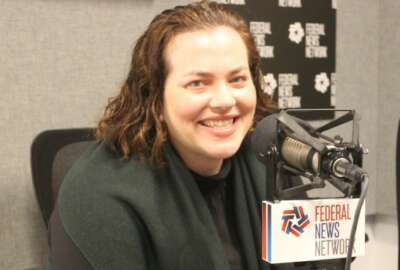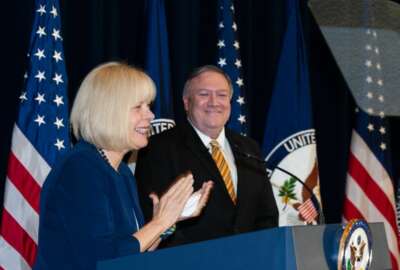

The State Department’s top HR official told members of the House committee she’s doubling down on the agency’s commitment to recruit the next generation of...
The State Department’s top human resources official told members of the House Foreign Affairs Committee she’s doubling down on the agency’s commitment to recruit the next generation of diplomats from a diverse pool of applicants, following a downward trend in those numbers.
The State Department, back in February, reported nearly half of its employees in the Senior Executive Service and nearly a quarter of its GS-15 employees are eligible to retire.
“We know that those persistent vacancies certainly put challenge and stress on the existing workforce. That leads to lower morale and less efficient productivity,” Oversight and Investigations Subcommittee Chairman Ami Bera (D-Calif.) said at Thursday’s hearing.
Secretary of State Mike Pompeo, early in his tenure at the agency, told employees during an all-hands address that he was committed to bringing “swagger” back into the agency after his predecessor Rex Tillerson sought to downsize the agency through a hiring freeze.
But as the top HR official in the State Department, and as director of the Foreign Service, Carol Perez, less than a year into the job, has been tasked with bringing the agency back to full capacity.
“I think you’re in charge of executing on that ethos,” Bera said.
So far, the agency has gotten off to a good start. Under Pompeo’s leadership, the department has brought on-board 827 Foreign Service employees and has set its civil and foreign service hiring goals at 454 employees above December 2017 levels.


The agency’s workforce consists of 25,000 domestic and overseas American employees and nearly 14,000 Foreign Service employees.
The agency’s 11,000 civil service personnel serve as the agency’s “institutional memory,” Perez said, based mostly in Washington, but also in passport security and mission support roles across the country.
As part of the State Department’s recruiting push, Perez said her focus is to remove on some common barriers to onboarding personnel.
To that end, Perez welcomed an amendment in the Defense Department’s fiscal 2020 spending bill that would give all federal employees 12 weeks of paid parental leave.
As a career official and a former ambassador to Chile, Perez said newcomers to the Foreign Service haven’t worked long enough to have accrued sick or annual leave, and despite the agency offering a year’s advance on leave, Perez said that hasn’t been enough in the past.
“I raised three children in the Foreign Service and it’s tough. When you move every two-to-three years, you have to make new friends. You may have a new medical system, and so this would be something that I think our workforce would really greatly appreciate,” Perez said.
Retention also remains a big focus. The State Department reports show attrition rates for the Foreign Service are approaching historic lows, with only 2% attrition for entry-level and 4% for mid-level. But because of its up-or-out system, the agency has its highest attrition rate at the senior level.
Perez is also looking at moving the Foreign Service’s paper-based exit surveys online, in order to boost response rates from departing diplomats. But early next year, Perez said the agency will launch a pilot to expand its employee feedback options.
“I think we should do ‘stay surveys.’ So not only when people leave, because then it’s too late, we need to figure out why are people staying,” she said.
Perez is also looking at rethinking the promotion tracks for technical specialists, like in information technology. Under the current system, those specialists can only go so far up the promotion ladder before taking on supervisory roles.
“A lot of people don’t want to do that. They’re not very good at it so we need to take a look at that,” Perez said.
Under Perez’s leadership, the State Department is also doubling down on increasing the diversity of its workforce at a time when it’s been on a decline.
“Federal agencies were not really focused very much on diversity 15, 25 years ago, and so what you see at the senior ranks is a reflection of those hiring practices that we had back then,” Perez said.
Rep. Ted Lieu (D-Calif.) pointed to a decrease in African-Americans in the senior ranks of the Foreign Service, from 4.6% in September 2016 to 3% in March 2019.
The agency currently has a network of 26 recruiters, 16 of which are stationed in the United States, focused on identifying the next generation of talent.
The agency has also partnered with the Cox Foundation to examine barriers to diversity in the agency’s senior rates. Perez said the agency expects to receive findings back by December.
In addition, Perez said the agency promotion panel officials have begun to undergo “unconscious bias” training, aimed at ensuring staff from all demographics have an opportunity to advance. An online training course will be available by the end of this year.
Copyright © 2025 Federal News Network. All rights reserved. This website is not intended for users located within the European Economic Area.
Jory Heckman is a reporter at Federal News Network covering U.S. Postal Service, IRS, big data and technology issues.
Follow @jheckmanWFED
